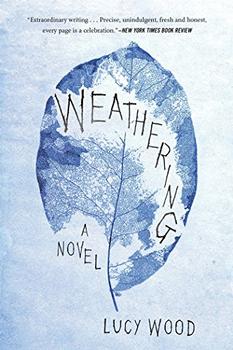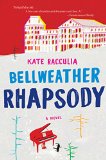Summary | Excerpt | Reviews | Beyond the book | Read-Alikes | Genres & Themes | Author Bio

Rebecca Makkai's sophomore novel The Hundred-Year House could just have easily been titled House of a Hundred Secrets. The story centers on Laurelfield, a country estate in Chicago's North Shore, and is set in three time periods — 1999, 1956, and 1929 — in that order.
Though the novel starts in 1999, the true story of Laurelfield begins in 1900 when August Devohr built the house for his wife Violet, who shortly thereafter killed herself in its attic. Violet's beauty and sadness, coupled with her enigmatic death infuses the house with mystery. This sort of drama is not uncommon in the Devohr family, whose insanity, irresponsibility with money, and penchant for divorce is widely known. By the 1920s, the Devohrs leave Laurelfield and relegate it to artists, making the estate a refuge for writers and painters. However, by the late 1950s, Laurelfield has again been reclaimed by the Devohr family, more specifically by Violet's granddaughter Grace. The hows and whys of these transferrals — from Devohrs to the artists and back — is one of the plot propellers. As the novel delves deeper into the history of Laurelfield, uncovering secrets about the Devohrs and the artists at the colony, the reader is plunged into a complicated world where nothing is what it seems.
In the beginning, we see Grace's daughter, Zee, struggling with her husband Doug. His efforts to write a scholarly work based on the poetry of Edwin Parfitt — a one-time resident of the Laurelfield artist colony — have left Doug discouraged. He's taken to ghostwriting young adult fiction in secret. Unable to talk to Zee about his frustration, he finds a friend in Miriam, an artist, also living at Laurelfield. In the 1956 section, finding connection in marriage and yearning for greater understanding is also at issue. Grace struggles with her decision to stay married to the abusive George. Both these early narratives reference the 1929 artist colony, raising questions that are answered in the end. The last part explores issues of connection through art and the importance of second chances.
The three sections are so different from each other that they almost function as linked short stories. Some characters, such as Grace, appear in more than one, but the primary glue of the novel is theme: how does one find solidarity with others; how art brings people together; the opportunity and burden of second chances. Makkai persistently analyzes this notion of personal improvement, of altering course in the middle of life.
Though The Hundred-Year House is described as a "ghost story told in reverse," there is little frightening about the characters or their story. If there is any "haunting," the novel suggests, it is the ghosts of previous choices, of paths not taken. Any magic the house exerts relates to helping the residents find their true purpose by merely nudging them in the direction they should be going. However, this pull is not always positive. As Grace points out, the house dispenses good and bad luck in equal measure. She fails to qualify that some get all good, while others get all bad.
The novel's unique structure and its vibrant characters make for active, exciting reading. Questions raised in one section are answered in others, creating a reading experience that might have you flipping back and forth through the pages. Makkai's sense of humor creates funny moments (the artists' drinking escapades) that offset more dismal ones (Grace's struggle with her husband). The Hundred-Year House is a puzzle, a plunge into a world of fascinating characters, and an examination of human relationships. It is not to be missed.
![]() This review was originally published in The BookBrowse Review in July 2014, and has been updated for the
June 2015 edition.
Click here to go to this issue.
This review was originally published in The BookBrowse Review in July 2014, and has been updated for the
June 2015 edition.
Click here to go to this issue.

If you liked The Hundred-Year House, try these:

by Lucy Wood
Published 2017
A dreamlike tale tale that explores big topics - belonging, mortality, love - though the lives of three women (one who is dead), and old house, and a river....

by Kate Racculia
Published 2015
A high school music festival goes awry when a young prodigy disappears from a hotel room that was the site of a famous murder/suicide fifteen years earlier.
Your guide toexceptional books
BookBrowse seeks out and recommends the best in contemporary fiction and nonfiction—books that not only engage and entertain but also deepen our understanding of ourselves and the world around us.